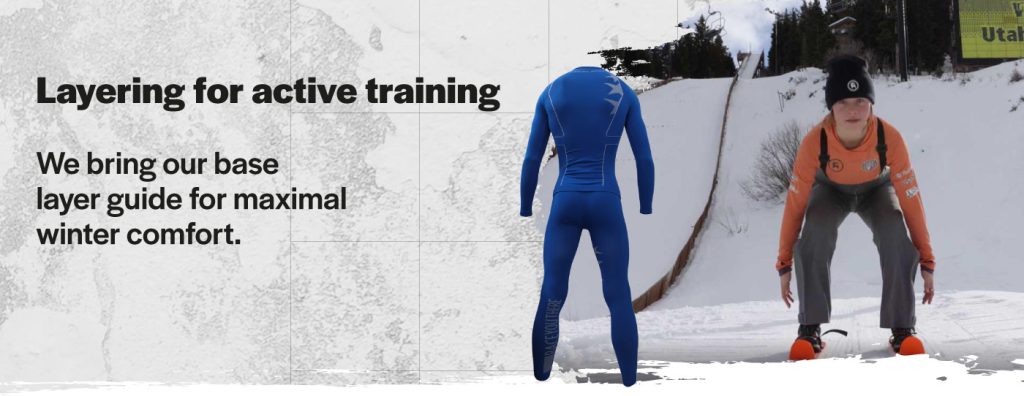The right kit keeps kids outside for longer. Regardless of the activity, you’re likely to go at a slower pace than you would do without kids, assuming they are beginners. So make sure your own patience isn’t impacted by cold feet two hours into your ski trip.
Outer layers
The most common mistake is to put your money and effort into the outer layers. For winter sports read ski jackets and salopettes. These can come with ridiculously high specs. Avalanche locators? Tailor it to your actual plans… the same brands for kids can offer high-tech features to a level which does not match their proficiency.
The underarm ventilation zips add cost to the manufacturing. Realistically, kids who don’t compete at club level will only spend several hours skiing on pleasant days where unzipping the front is OK. Other OTT specs include snow skirts and snow cuffs – which are great for off-piste skiing. For younger kids we would recommend snow suits over salopettes/ski jackets anyway, as they offer greater comfort and superior insulation. Older kids are more likely to stay on their feet, enjoying the technical challenges of skiing as much as the messing around. When they do wipe out, or join in snowball fighting, the right base layers will give sufficient protection.
Finally, the quality brands often design hi-spec hoods and high collars. Bear in mind that this is useful for the “I’ve paid for my ski pass and I’m getting 30 lifts out of this” skier. Kids are rarely that gung-ho when the fog or bitter wind sets in, and at Team Magnus we are big on keeping it fun. In addition, we believe you should respect the mountains. Equipping kids for harsh weather could be a false security. Allow for days away from the pistes and keep it light-hearted.
In terms of kids’ skiwear, the only high-end spec we think matters is the quality of the seams. Playing in UK winter weather often involves wet, sleety snow. Even if you only bring the kit out on high altitude ski trips, with perfect, dry snow, better quality seams mean you’re more likely to be able to hand the ski clothing down to siblings or friends.
A final tip if you have toddlers: Detachable hoods are safer than fixed ones in case your toddler gets stuck – out of sight.
Inner layers
Base layers come in handy all year in colder climates. You can go for man-made fibres or wool depending on your child’s skin type. Wool feels cosy the minute it’s pulled on, the man-made fibres are cheaper. Base layers are fantastic as PJs when you’re camping, as something to change into after water-sports, for young hillwalkers starting in a valley and headed to an exposed summit, and of course for all winter sports. The Team Magnus kids have sets and sets of these – useful for everything from January rugby to August river paddles. Buy in bulk – life is better with base layers.
Accessories
The longer your kids will wear mittens the better. Gloves look hi-tech but never offer the same insulation, and are more expensive. It’s difficult to know whether to spend money on quality gloves and mittens, because kids lose these all the time. A semi-cheap solution are thin, wool fingerless gloves. Kids are more likely to keep them on, some of them offer a mitt-style pull-over feature, and thin wool works magic compared to man-made materials. Even if you’re at high altitude, in late season thin wool could be a far better and more comfortable solution than the clumsier ski gloves or mittens.
The same with socks. Thermal-schmermal: Go with what the Kiwis and Scandinavians wear – they opt for thin wool socks over any other material. Even when drenched, wool socks keep insulating the skin. Wet cotton is downright dangerous in cold weather, and man-made fibres have marginal effect compared to wool. Even thin socks offer excellent insulation if the wool content is high enough, and with the right amount of elastane they’re amazingly comfortable. Cold feet have sunk more family day trips than any other dress fails, so buy in bulk.
Head and neck: Heat loss is proportional to the surface of the body exposed. Massive heat loss through the head is a myth, so don’t fret if your kids hate hats. They do lose hats and scarves like they’re on a mission, so it might feel pointless to invest too much money in this. The best solution to this problem is a quality neckwarmer, which stays around the kids’ necks when not needed. You can also search for wool ones, but cotton is – as always – a waste of time outdoors. We find scarves fuddy-duddy and most hats on sale on the British high street are made in god-awful fibres – acrylic or cotton – and are just token winter garments, which offer minimal protection. If you’re bringing very young children to a deep-snow paradise, it’s worth sourcing thin-wool balaclavas. These stay on without any adjusting and allow so much fantastic snow play without the cold creeping in down the neck. Check your child’s tolerance to merino wool before you go.





